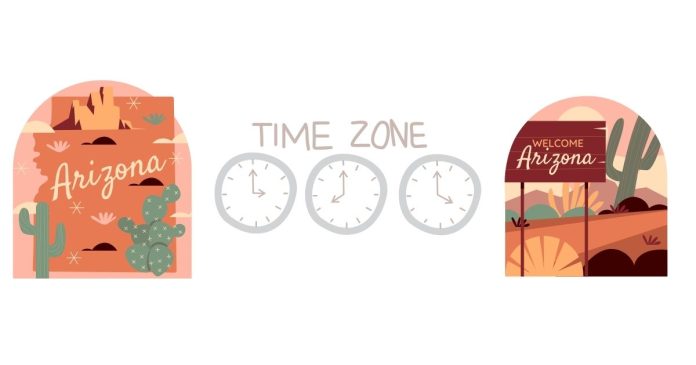Arizona’s time zone practices have long been a topic of curiosity and confusion for residents and visitors alike. While most states in the U.S. observe Daylight Saving Time (DST), Arizona is an exception, adhering to a more straightforward approach to timekeeping. Here’s a breakdown of Arizona’s time zone situation and what makes it unique.
What Time Zone Is Arizona In?
Arizona primarily operates on Mountain Standard Time (MST) year-round, without observing Daylight Saving Time. This means Arizona does not adjust its clocks forward in spring or backward in fall, unlike most other states.
Why Doesn’t Arizona Observe Daylight Saving Time?
The decision to forgo DST stems from practical reasons:
- Climate Considerations:
Arizona’s desert climate means scorching summers, with temperatures often exceeding 100°F (37.8°C). Extending daylight into the evening would result in higher energy consumption due to increased air conditioning use. - Historical Decision:
Arizona opted out of DST in 1968, exercising the option granted by the federal Uniform Time Act of 1966. This decision was based on the belief that it better suited the state’s lifestyle and energy needs.
Exceptions to the Rule: The Navajo Nation
While most of Arizona does not observe DST, the Navajo Nation, which spans parts of northeastern Arizona, New Mexico, and Utah, does observe it. This decision aligns the Navajo Nation with the rest of its territory across state borders. This creates a unique scenario where time differs depending on your location within Arizona:
- Navajo Nation: Observes DST.
- Rest of Arizona: Does not observe DST.
How Does Arizona’s Time Compare to Other States?
Arizona’s time zone changes relative to other states depending on the season:
- During Standard Time (November–March):
Arizona is on the same time as Mountain Time (MST). - During Daylight Saving Time (March–November):
Arizona aligns with Pacific Time (PDT) instead of Mountain Time.
For example:
- When it’s 1:00 PM in Denver (Mountain Time), it’s also 1:00 PM in Phoenix during Standard Time.
- During DST, when it’s 1:00 PM in Denver, it’s 12:00 PM in Phoenix.
Impact on Daily Life and Business
- Interstate Communication:
People coordinating with businesses or individuals outside Arizona often need to clarify the time difference, especially during DST. - Travel Confusion:
Travelers entering or leaving the Navajo Nation may find themselves adjusting their clocks, even within the same state. - Broadcasting and Events:
National broadcasts or live-streamed events may list confusing times for Arizona residents due to the state’s non-observance of DST.
Community Perspectives
Residents of Arizona often express appreciation for the simplicity of not having to adjust their clocks twice a year. However, newcomers or visitors sometimes find the time zone situation perplexing, especially during DST when Arizona’s time aligns with Pacific Time.
Reddit threads like r/arizona frequently discuss these nuances, offering insights, tips, and humor about the state’s timekeeping practices.
Arizona’s unique approach to time zones reflects its practical and environmental considerations, making it one of the few places in the U.S. to opt out of Daylight Saving Time. While this choice simplifies life for residents, it adds a layer of complexity for those unfamiliar with the state’s practices. Understanding Arizona’s time zone situation can save you from scheduling mishaps and ensure you’re always on time, wherever you are in the Grand Canyon State.



